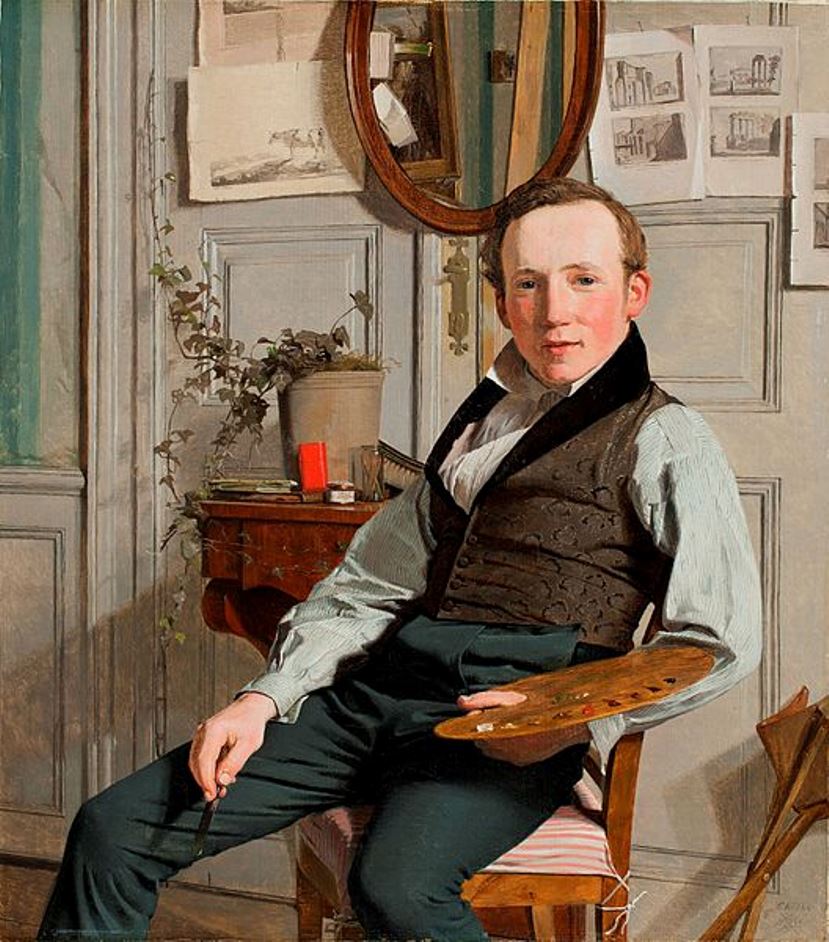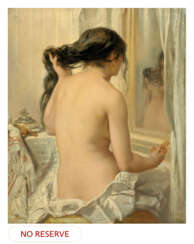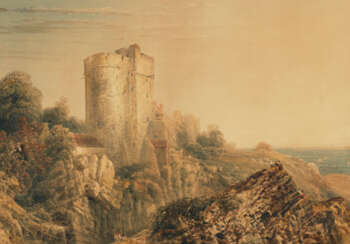
Old Masters Part II: Paintings, Sculpture, Drawings and Watercolours

Charles-Emile Jacques was a French painter of Pastoralism and engraver who was, with Jean-François Millet, part of the Barbizon School. He first learned to engrave maps when he spent seven years in the French Army.

David Wilkie was a Scottish painter, especially known for his genre scenes. He painted successfully in a wide variety of genres, including historical scenes, portraits, including formal royal ones, and scenes from his travels to Europe and the Middle East. His main base was in London, but he died and was buried at sea, off Gibraltar, returning from his first trip to the Middle East. He was sometimes known as the "people's painter".
He was Principal Painter in Ordinary to King William IV and Queen Victoria. Apart from royal portraits, his best-known painting today is probably The Chelsea Pensioners reading the Waterloo Dispatch of 1822 in Apsley House.
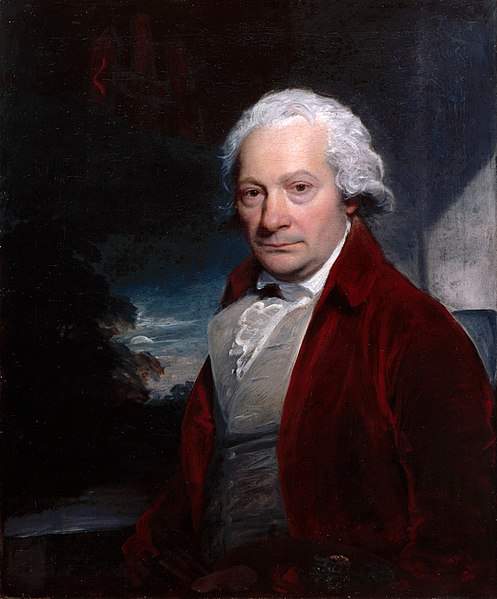
Paul Sandby was a British watercolorist, draughtsman and printmaker, and a founder member of the Royal Academy.
Sandby first worked as a draughtsman and cartographer before painting his first paintings, watercolors of bridges, fortifications and Scottish landscapes, as well as views of Windsor. These works eventually made him a sought-after artist. Sandby also painted many caricatures and skillfully documented eighteenth-century British social life.
In 1768, Sandby, his brother Thomas Sandby and 27 other artists became founding members of the Royal Academy in London. He is now considered one of the founders of English watercolor.

Joseph Mallord William Turner, a seminal figure in British painting, was born in 1775 and left an indelible mark on the Romantic movement. Known for his expressive coloration, imaginative landscapes, and turbulent marine paintings, Turner's work transcends the traditional boundaries of art to capture the sublime force of nature. His career was distinguished by early talent, evidenced by his acceptance into the Royal Academy at the young age of 14, and a prolific output that included over 2,000 paintings and 19,000 drawings and sketches.
William Turner's unique approach to landscape painting, characterized by dramatic skies and atmospheric effects, set a new standard for capturing mood and emotion on canvas. His innovative use of light and color influenced countless artists, elevating landscape painting to rival the status of history painting. Turner's legacy is also marked by his eccentricity and reclusiveness, traits that only added to the mystique surrounding his artistic genius.
Among his most famous works are "The Fighting Temeraire," symbolizing the passing of the old world, and "Rain, Steam and Speed," capturing the Industrial Revolution's impact. These paintings not only showcase William Turner's technical skill but also his philosophical engagement with the changing world around him.
For collectors and experts in art and antiques, William Turner's works represent the pinnacle of Romantic art, offering insight into the 19th-century aesthetic and philosophical landscape. His influence on subsequent generations of artists underscores his position as a pivotal figure in the history of Western art.
To stay informed about Joseph Mallord William Turner's works and related events, signing up for updates from reputable art institutions can provide valuable insights into new discoveries and auction events related to this master of the British landscape.

Joseph Mallord William Turner, a seminal figure in British painting, was born in 1775 and left an indelible mark on the Romantic movement. Known for his expressive coloration, imaginative landscapes, and turbulent marine paintings, Turner's work transcends the traditional boundaries of art to capture the sublime force of nature. His career was distinguished by early talent, evidenced by his acceptance into the Royal Academy at the young age of 14, and a prolific output that included over 2,000 paintings and 19,000 drawings and sketches.
William Turner's unique approach to landscape painting, characterized by dramatic skies and atmospheric effects, set a new standard for capturing mood and emotion on canvas. His innovative use of light and color influenced countless artists, elevating landscape painting to rival the status of history painting. Turner's legacy is also marked by his eccentricity and reclusiveness, traits that only added to the mystique surrounding his artistic genius.
Among his most famous works are "The Fighting Temeraire," symbolizing the passing of the old world, and "Rain, Steam and Speed," capturing the Industrial Revolution's impact. These paintings not only showcase William Turner's technical skill but also his philosophical engagement with the changing world around him.
For collectors and experts in art and antiques, William Turner's works represent the pinnacle of Romantic art, offering insight into the 19th-century aesthetic and philosophical landscape. His influence on subsequent generations of artists underscores his position as a pivotal figure in the history of Western art.
To stay informed about Joseph Mallord William Turner's works and related events, signing up for updates from reputable art institutions can provide valuable insights into new discoveries and auction events related to this master of the British landscape.
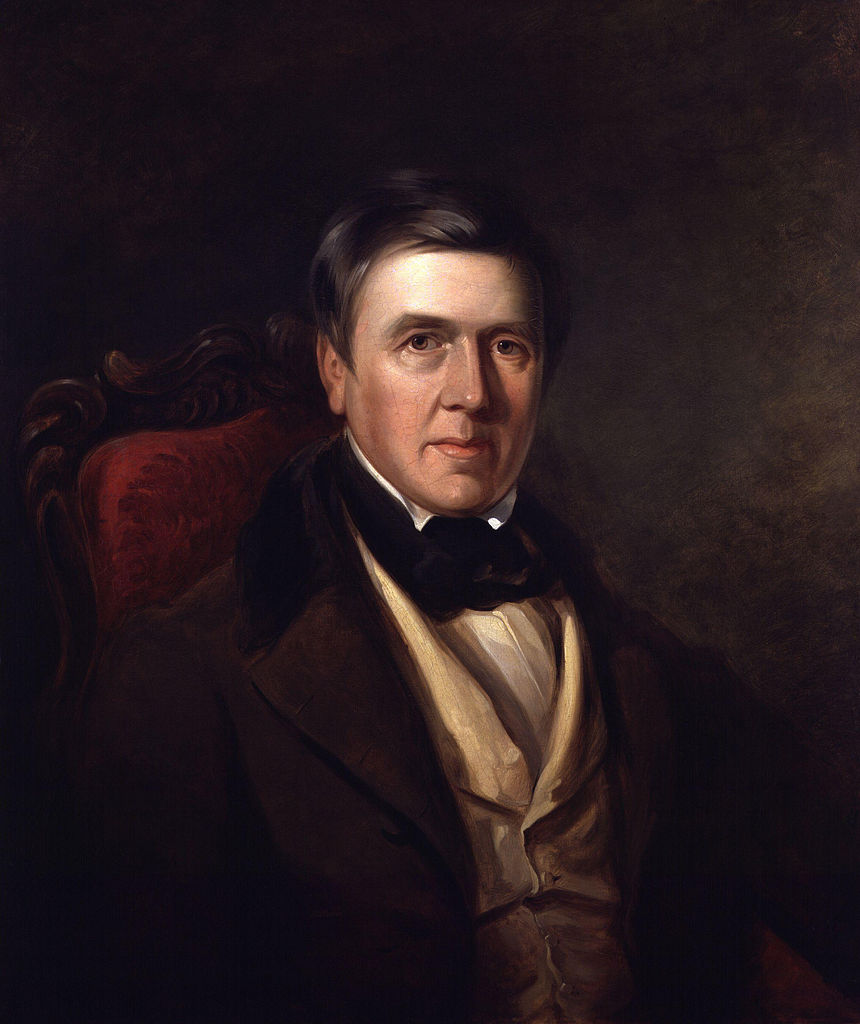
David Cox was a British landscape painter, celebrated for his pivotal role in the Birmingham School of landscape artists and as a precursor to Impressionism. Born in Birmingham in 1783, Cox initially worked in his hometown as a scene painter before pursuing a career in watercolors and, later, oils in London. His paintings are renowned for their dynamic depiction of the English and Welsh countryside, capturing the sublime effects of weather and light with a loose, expressive brushwork that distinguished him from his contemporaries.
Throughout his career, Cox experimented with various materials, notably adopting what came to be known as "Cox Paper," a rough paper that enhanced the textural effects of his watercolors. His works are held in high esteem and are part of collections in major museums, including The Metropolitan Museum of Art and the Tate Gallery, where his notable works such as "Journey Home" and "Rhyl Sands" are displayed.
In the latter years of his life, Cox returned to Birmingham, where he continued to innovate in both watercolors and oils until his death in 1859. His contributions to the landscape genre have left a lasting impact on the field of British art.
For collectors and art experts interested in David Cox's work, staying updated on sales and auction events can provide opportunities to acquire pieces by this influential artist. Sign up here to receive updates exclusively related to David Cox's artwork.

David Cox was a British landscape painter, celebrated for his pivotal role in the Birmingham School of landscape artists and as a precursor to Impressionism. Born in Birmingham in 1783, Cox initially worked in his hometown as a scene painter before pursuing a career in watercolors and, later, oils in London. His paintings are renowned for their dynamic depiction of the English and Welsh countryside, capturing the sublime effects of weather and light with a loose, expressive brushwork that distinguished him from his contemporaries.
Throughout his career, Cox experimented with various materials, notably adopting what came to be known as "Cox Paper," a rough paper that enhanced the textural effects of his watercolors. His works are held in high esteem and are part of collections in major museums, including The Metropolitan Museum of Art and the Tate Gallery, where his notable works such as "Journey Home" and "Rhyl Sands" are displayed.
In the latter years of his life, Cox returned to Birmingham, where he continued to innovate in both watercolors and oils until his death in 1859. His contributions to the landscape genre have left a lasting impact on the field of British art.
For collectors and art experts interested in David Cox's work, staying updated on sales and auction events can provide opportunities to acquire pieces by this influential artist. Sign up here to receive updates exclusively related to David Cox's artwork.

David Cox was a British landscape painter, celebrated for his pivotal role in the Birmingham School of landscape artists and as a precursor to Impressionism. Born in Birmingham in 1783, Cox initially worked in his hometown as a scene painter before pursuing a career in watercolors and, later, oils in London. His paintings are renowned for their dynamic depiction of the English and Welsh countryside, capturing the sublime effects of weather and light with a loose, expressive brushwork that distinguished him from his contemporaries.
Throughout his career, Cox experimented with various materials, notably adopting what came to be known as "Cox Paper," a rough paper that enhanced the textural effects of his watercolors. His works are held in high esteem and are part of collections in major museums, including The Metropolitan Museum of Art and the Tate Gallery, where his notable works such as "Journey Home" and "Rhyl Sands" are displayed.
In the latter years of his life, Cox returned to Birmingham, where he continued to innovate in both watercolors and oils until his death in 1859. His contributions to the landscape genre have left a lasting impact on the field of British art.
For collectors and art experts interested in David Cox's work, staying updated on sales and auction events can provide opportunities to acquire pieces by this influential artist. Sign up here to receive updates exclusively related to David Cox's artwork.










